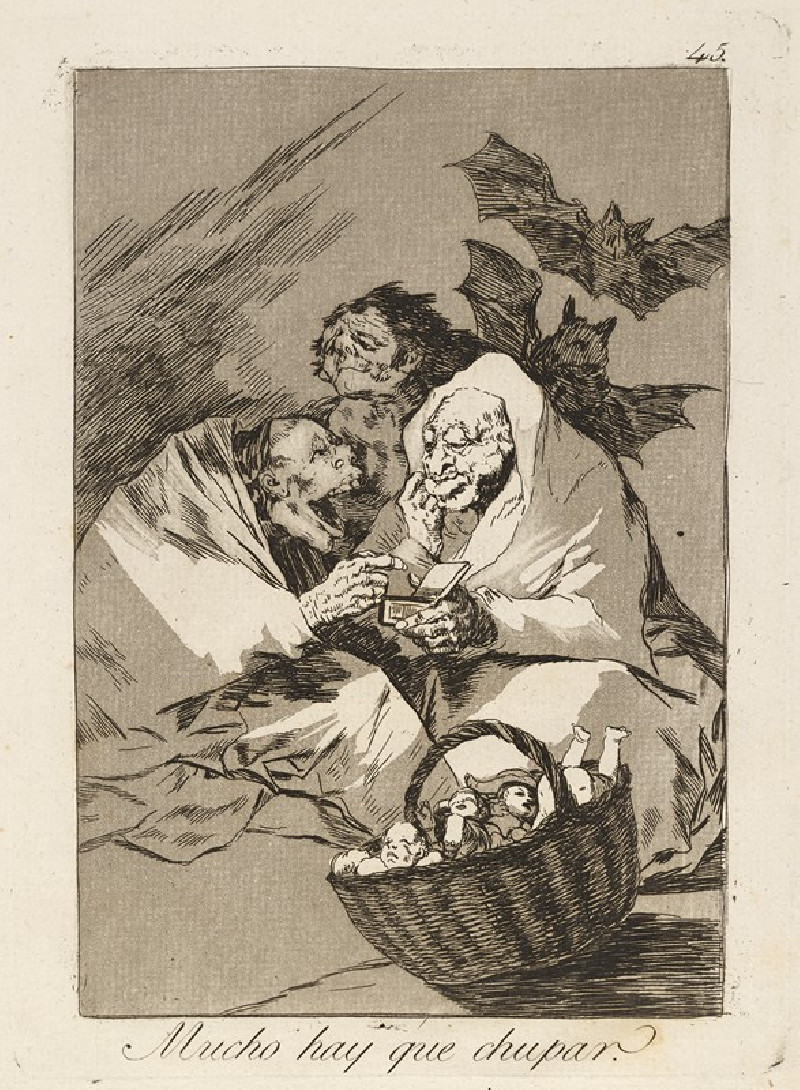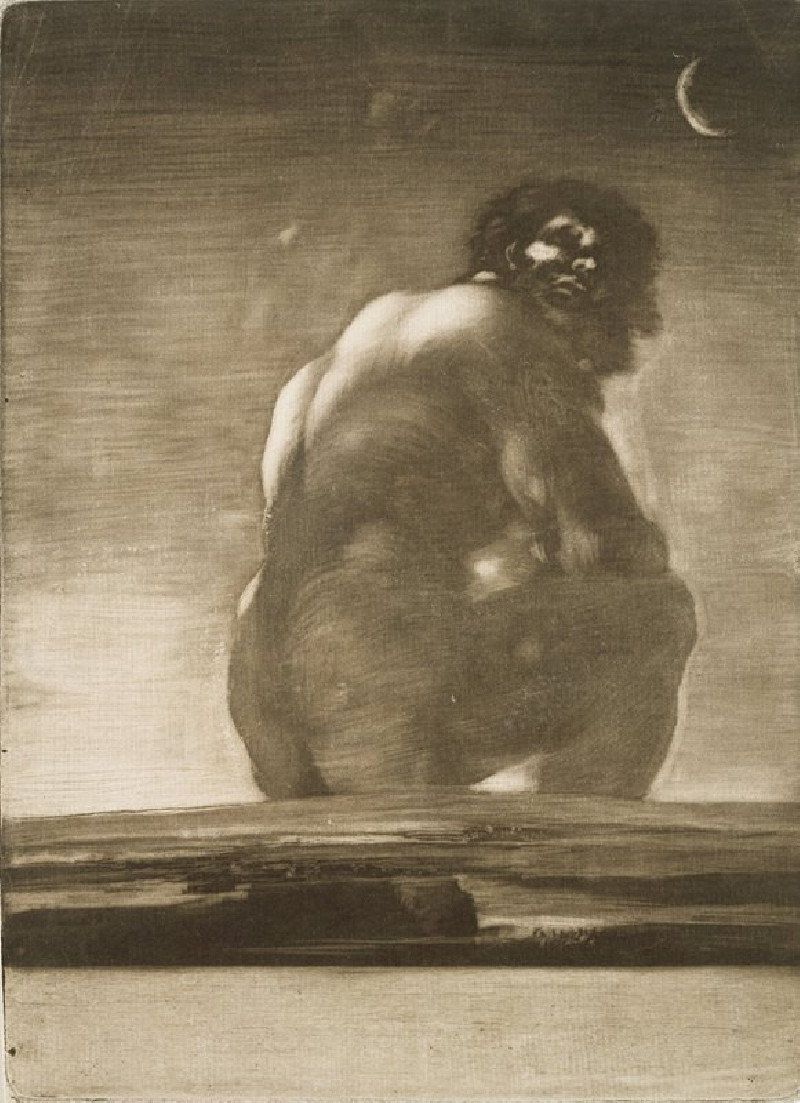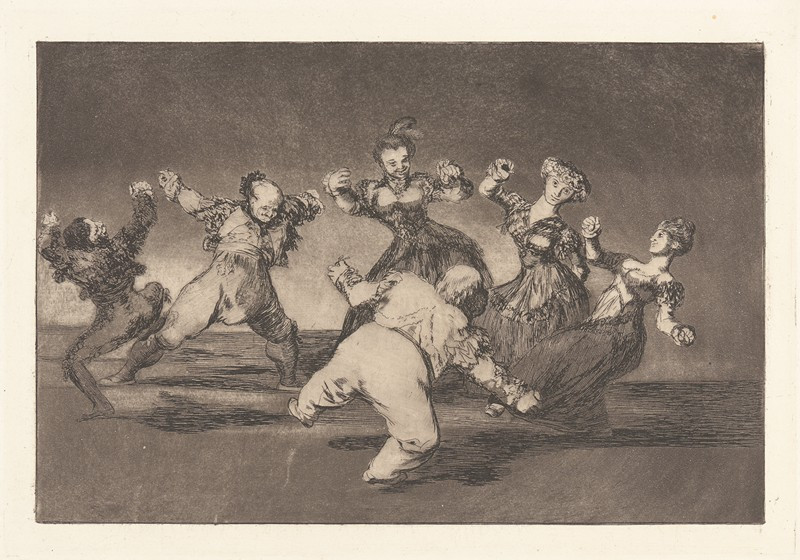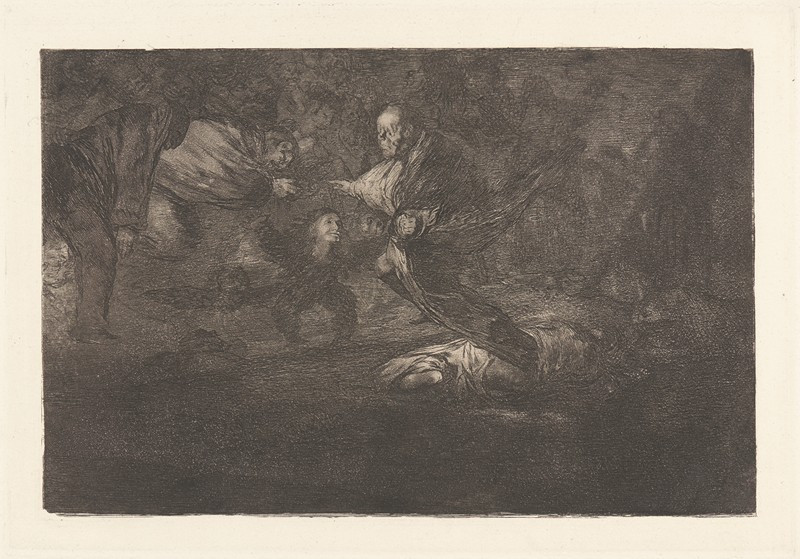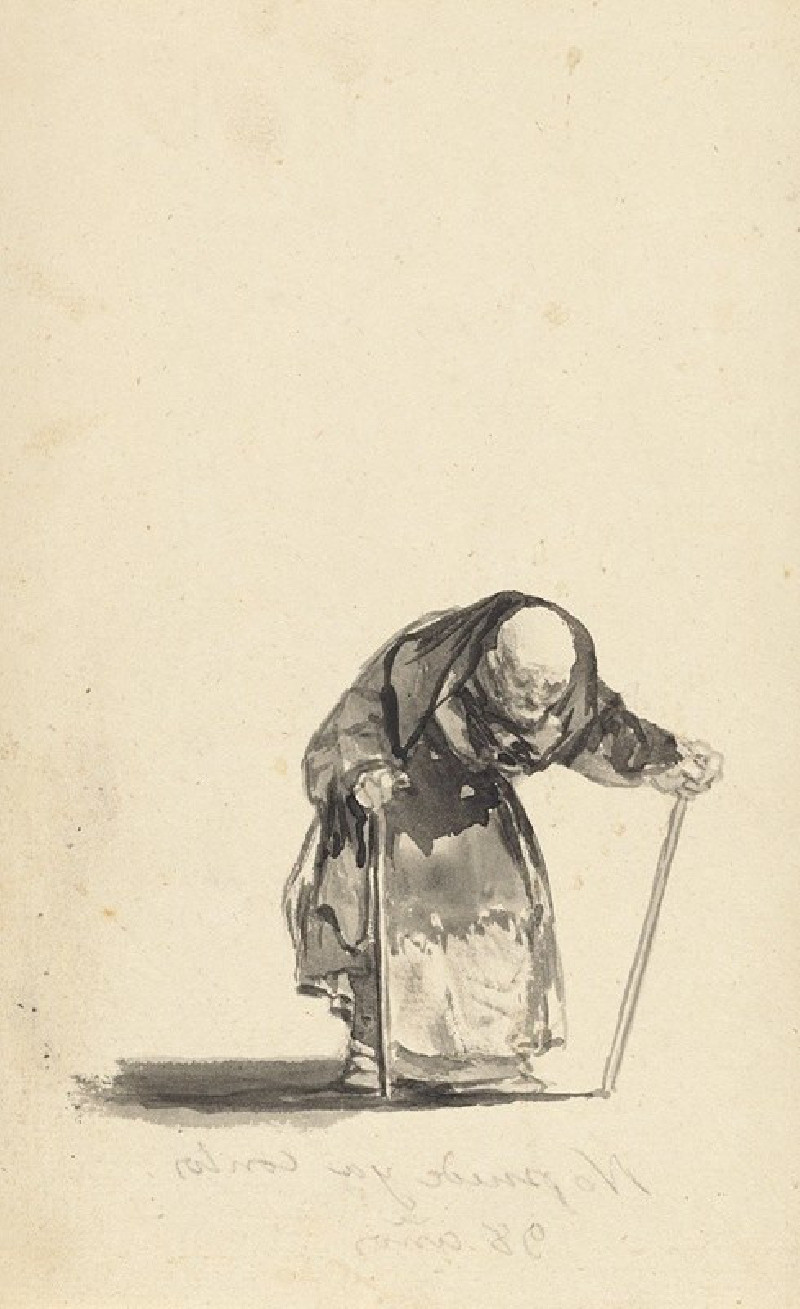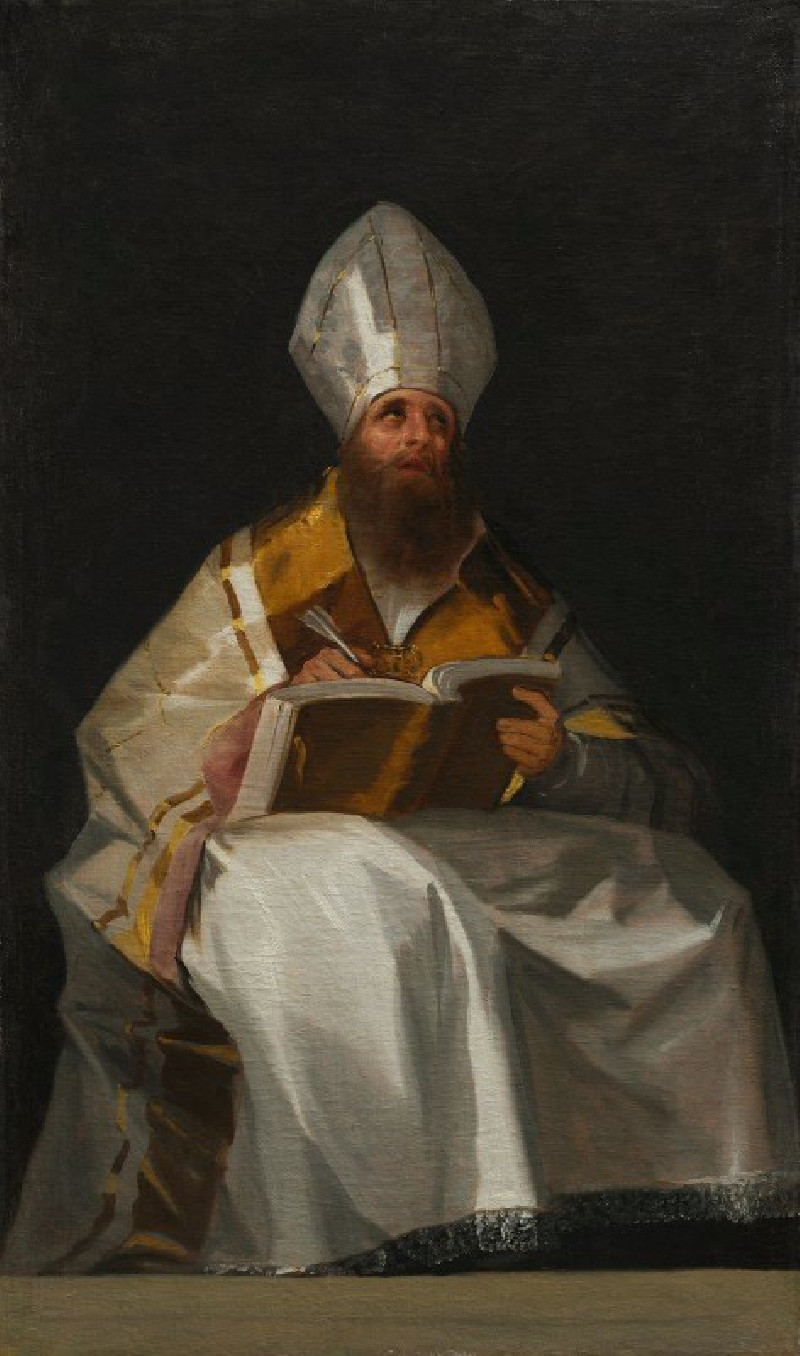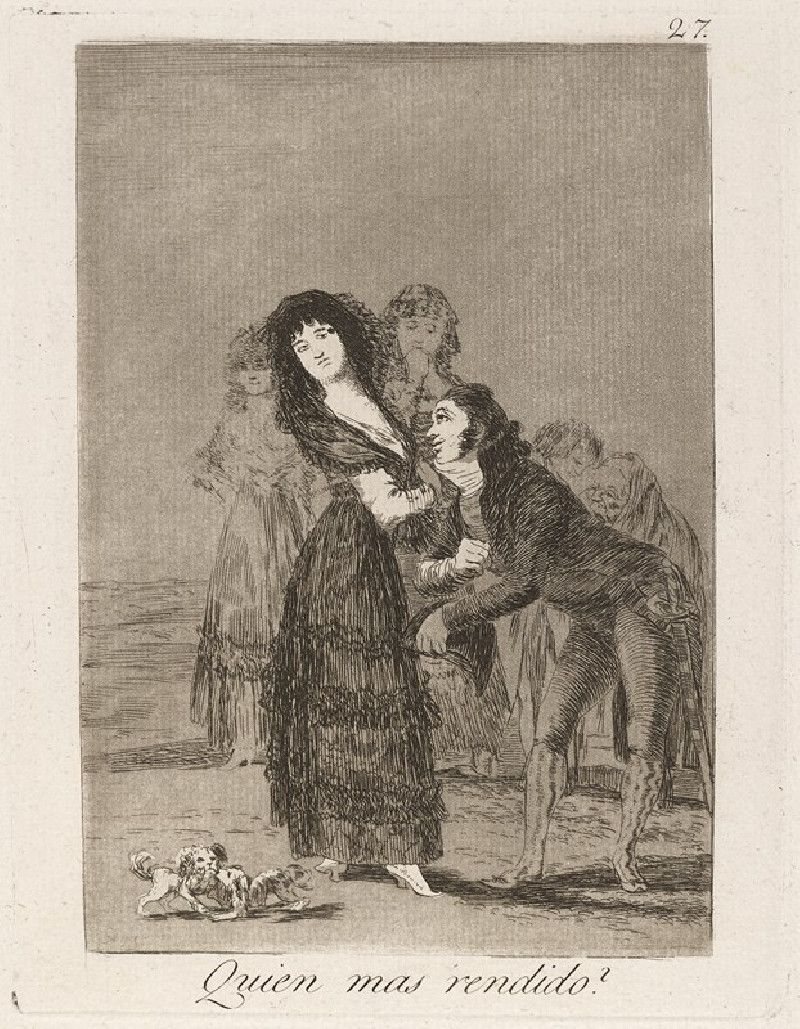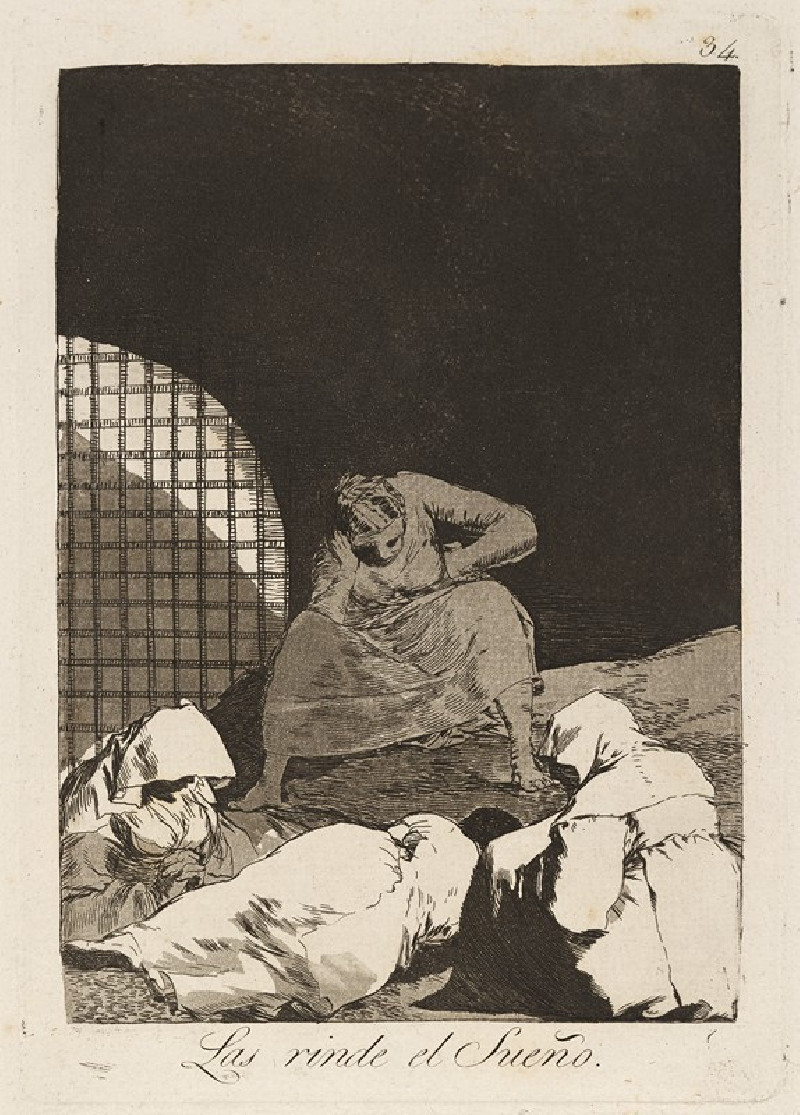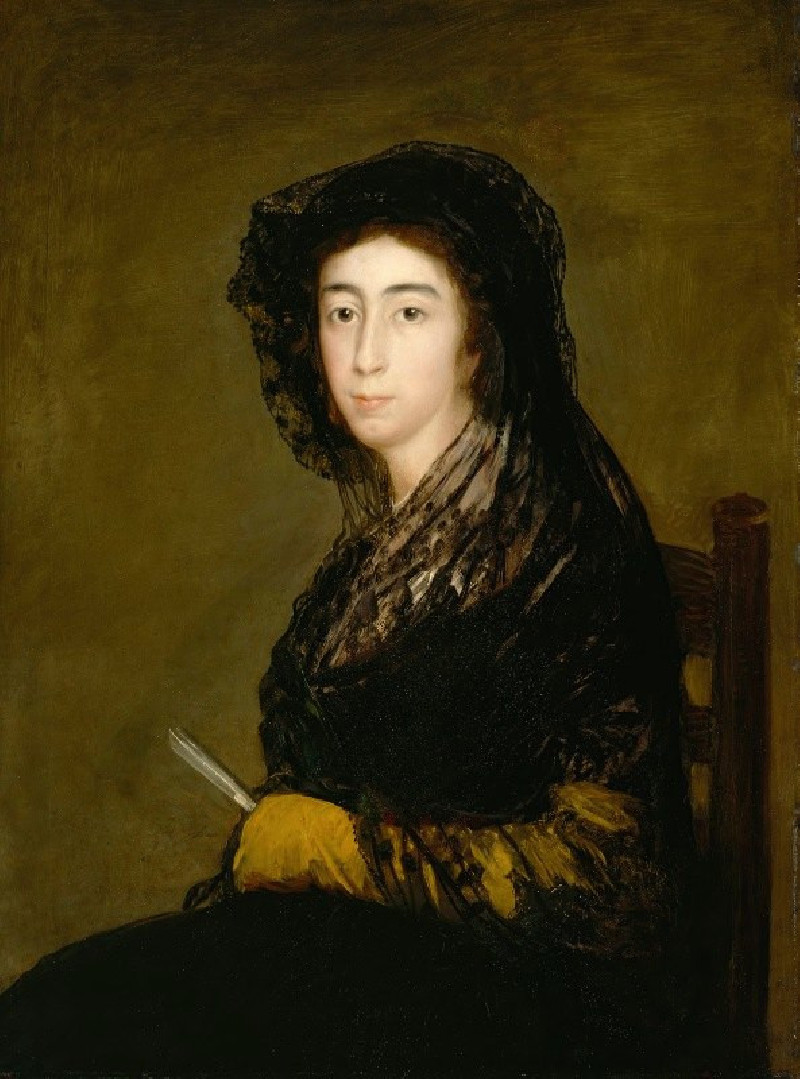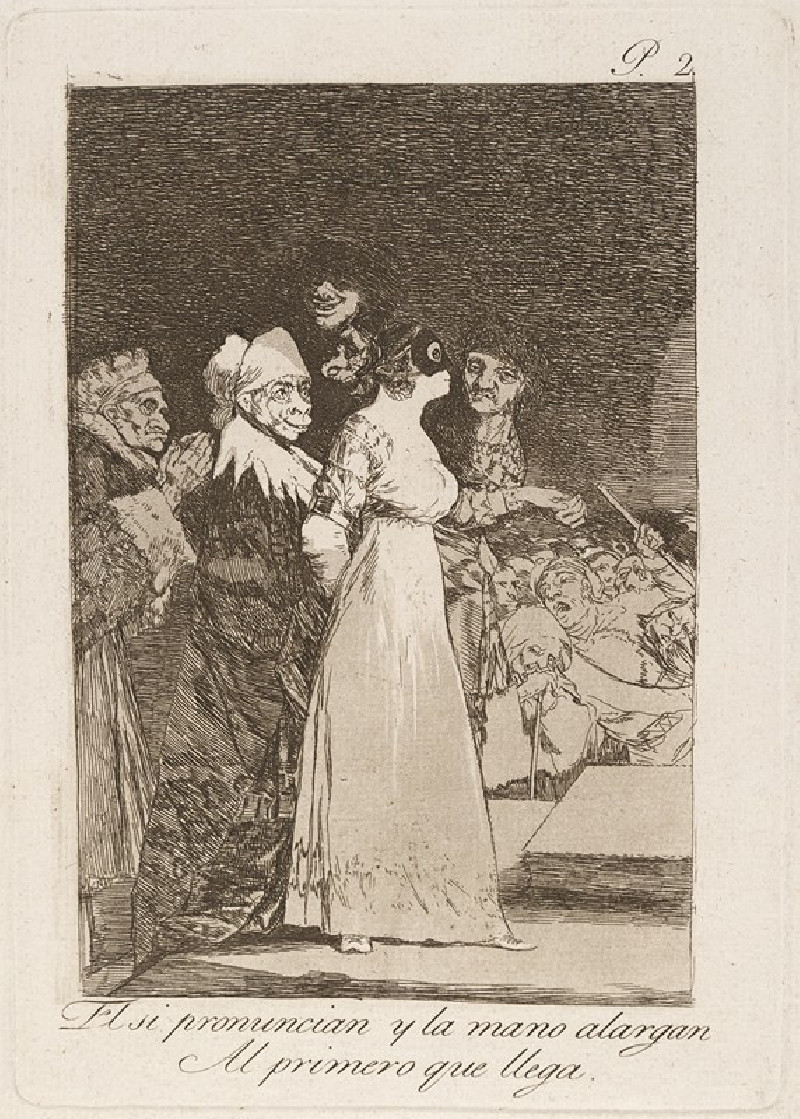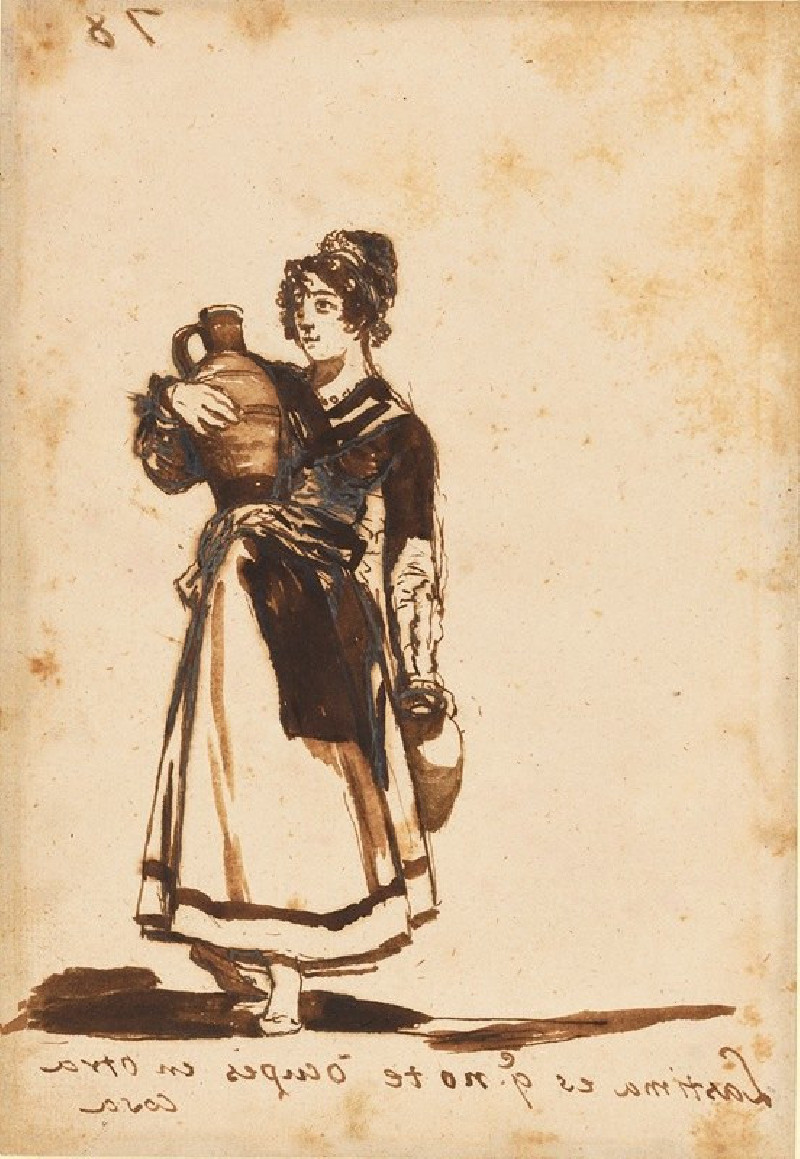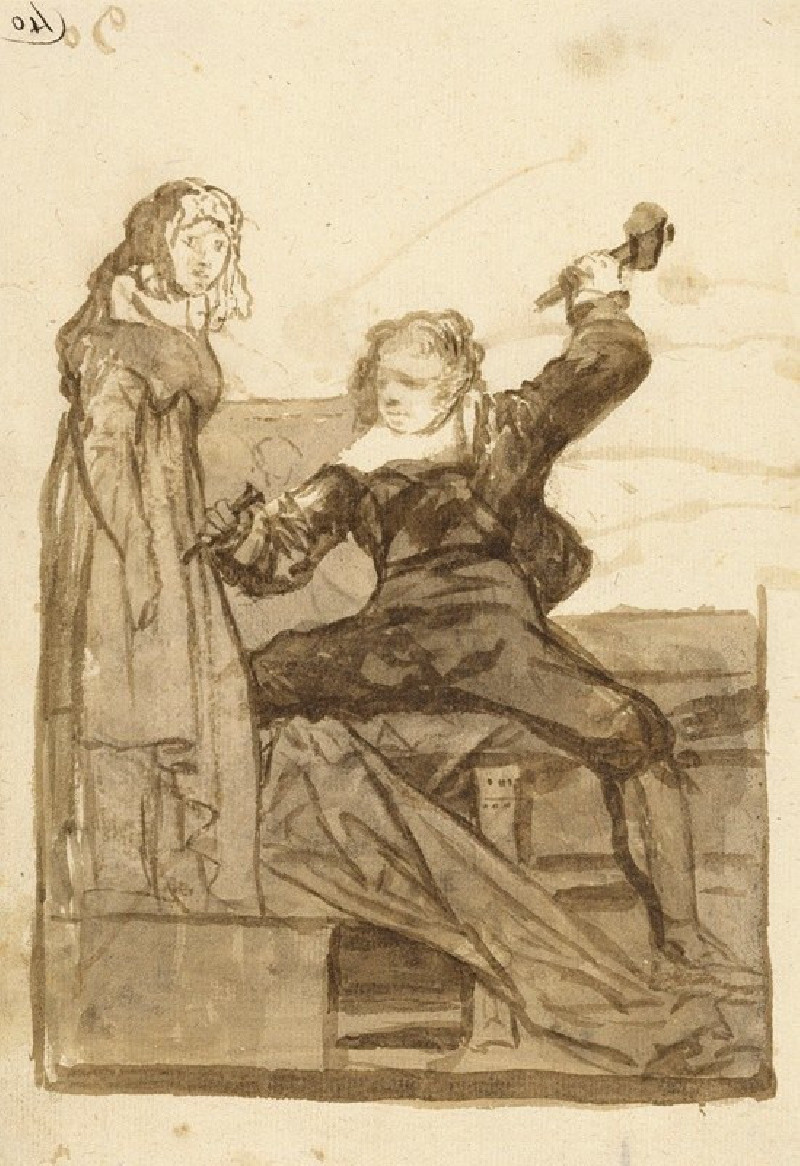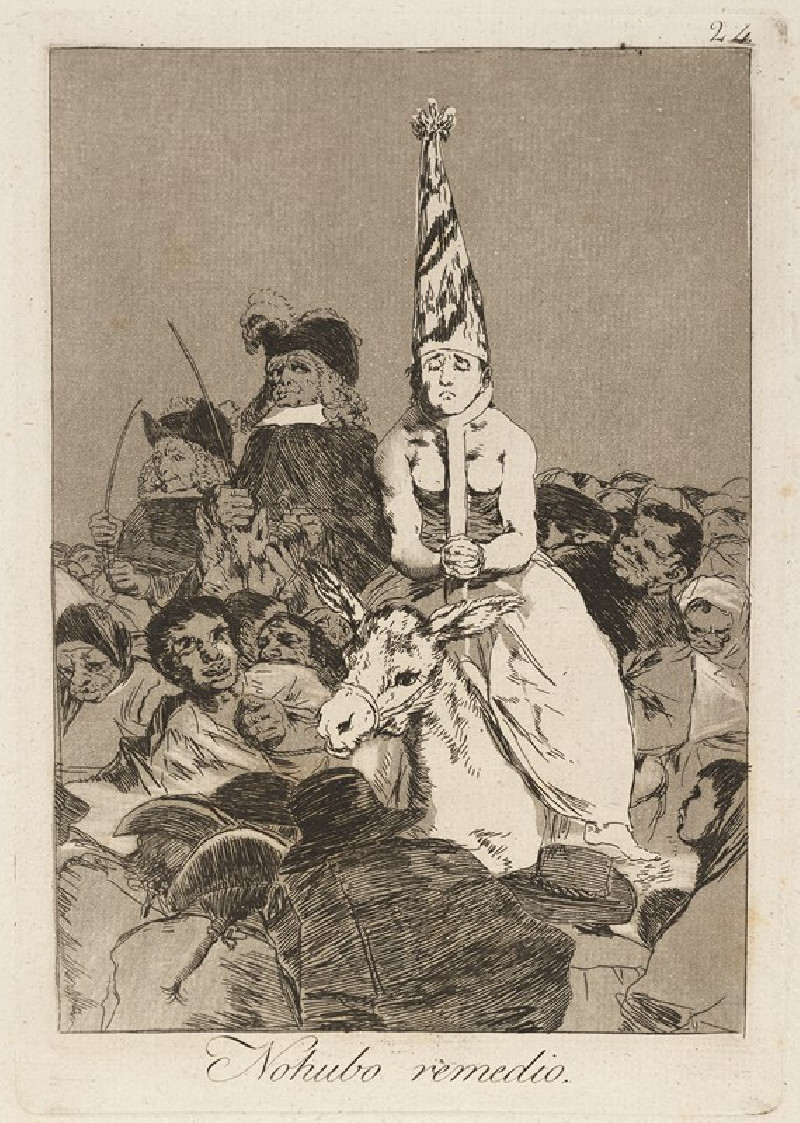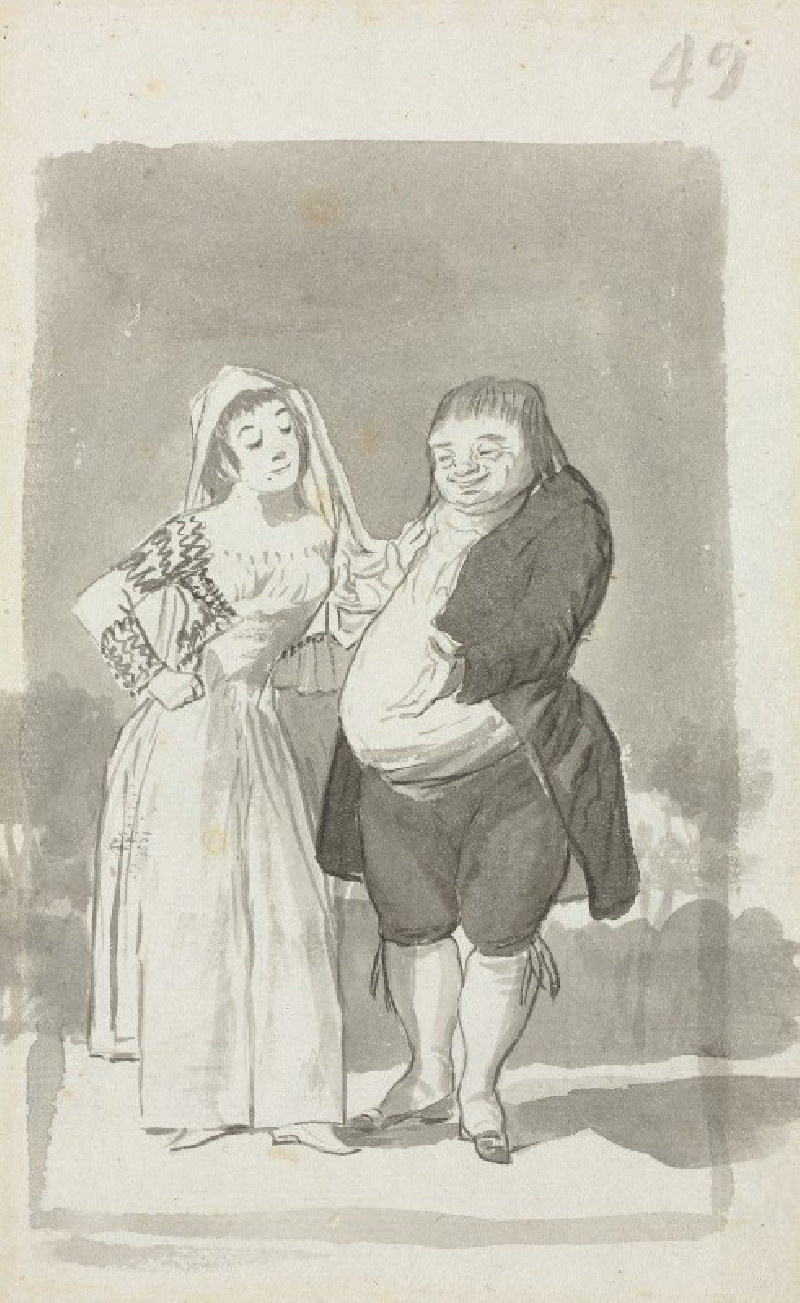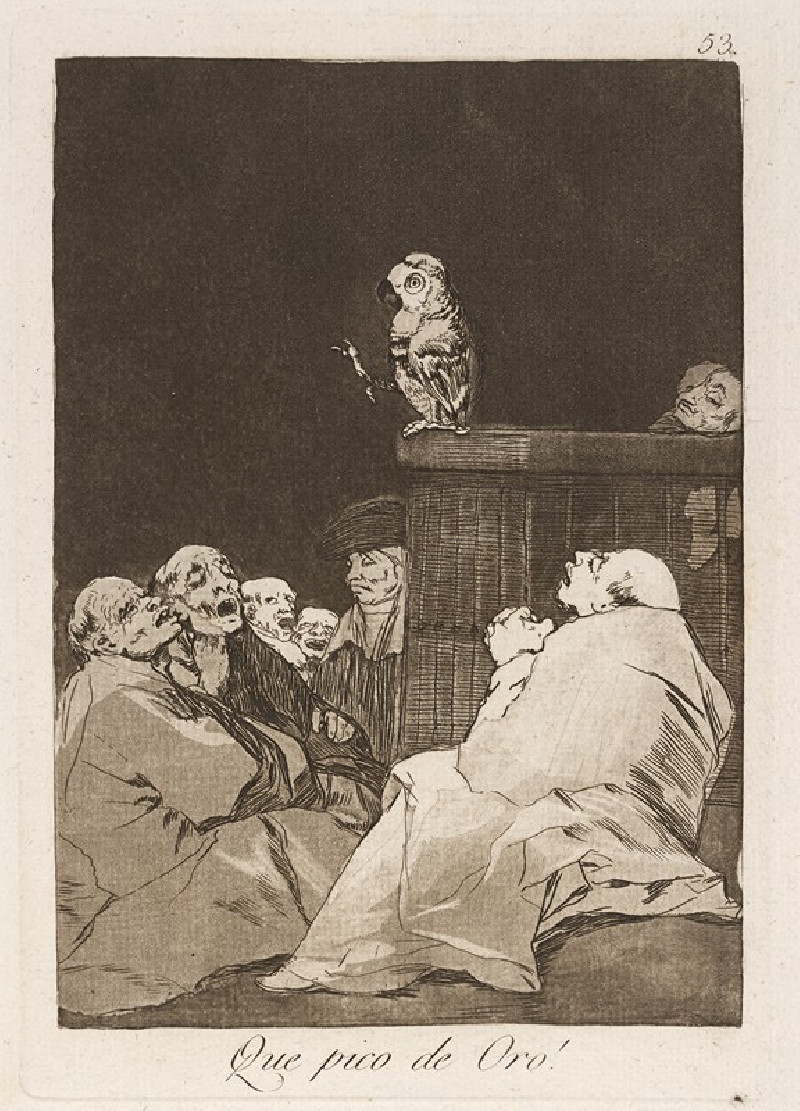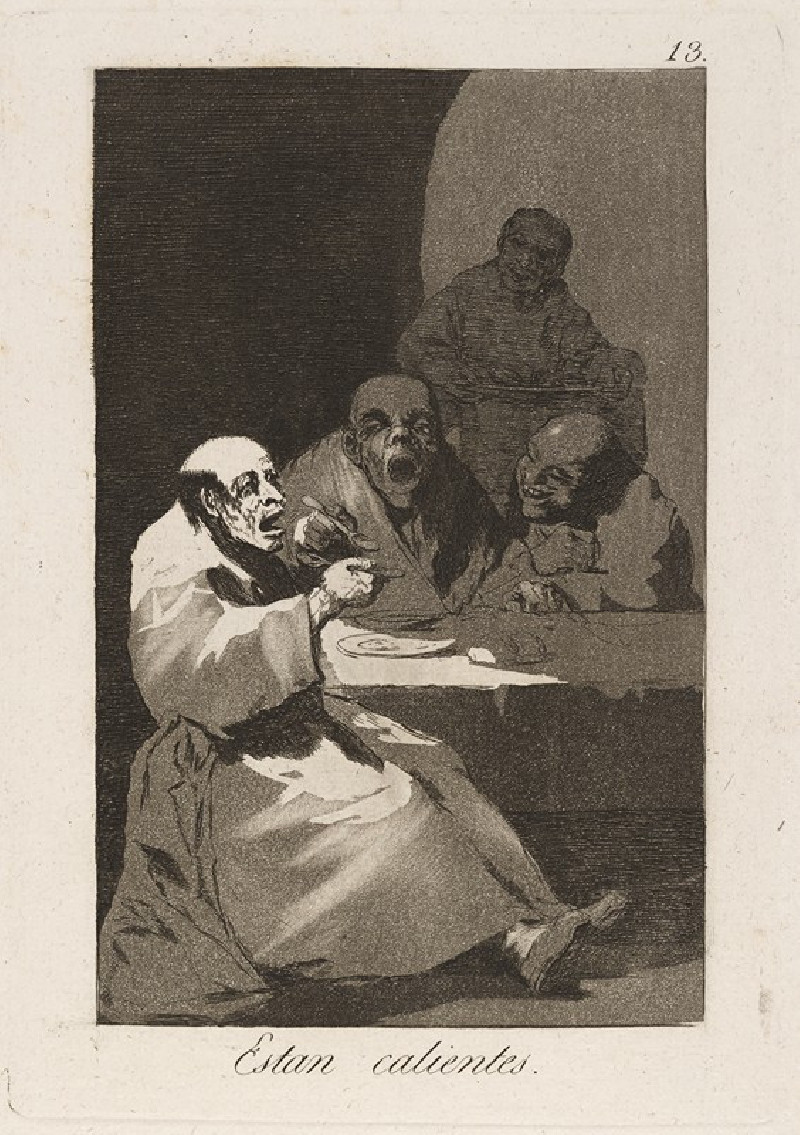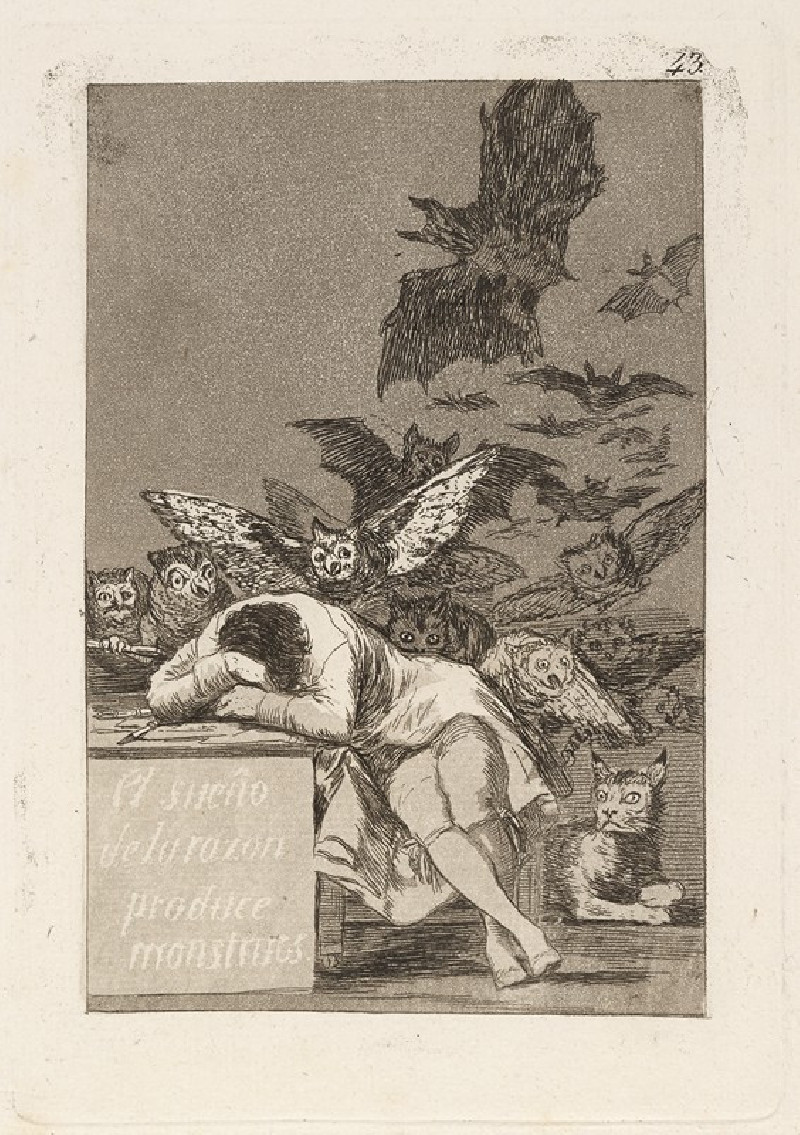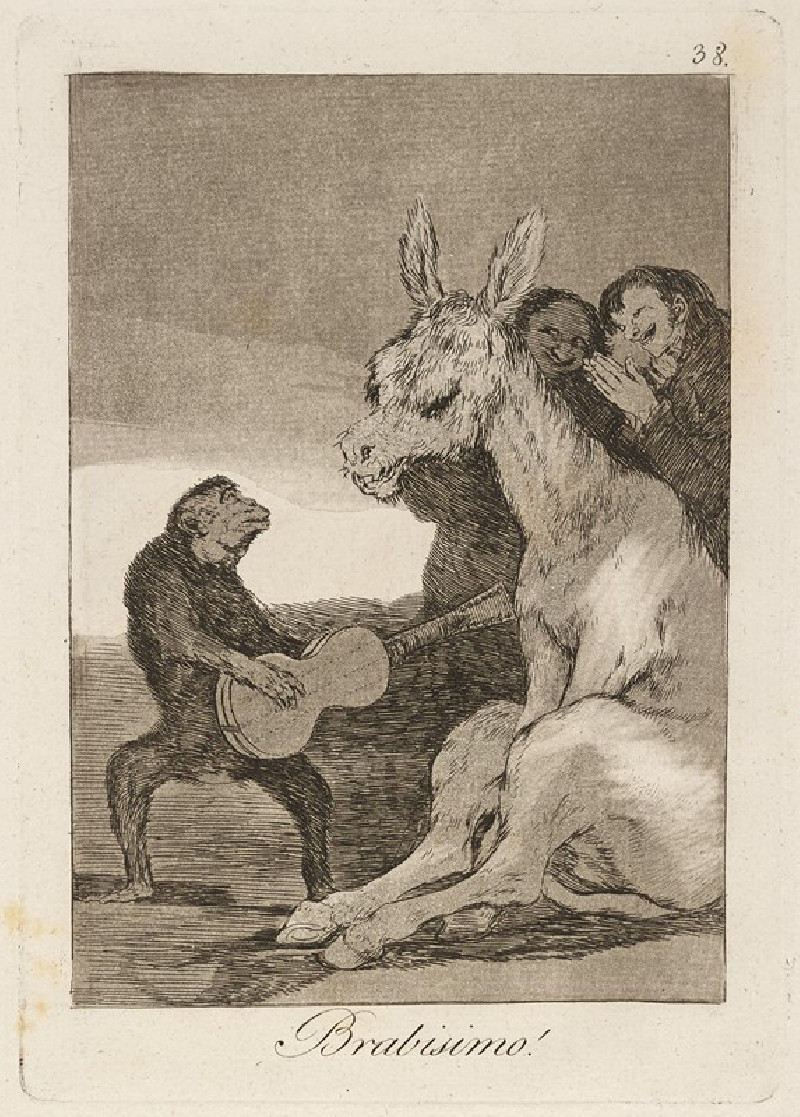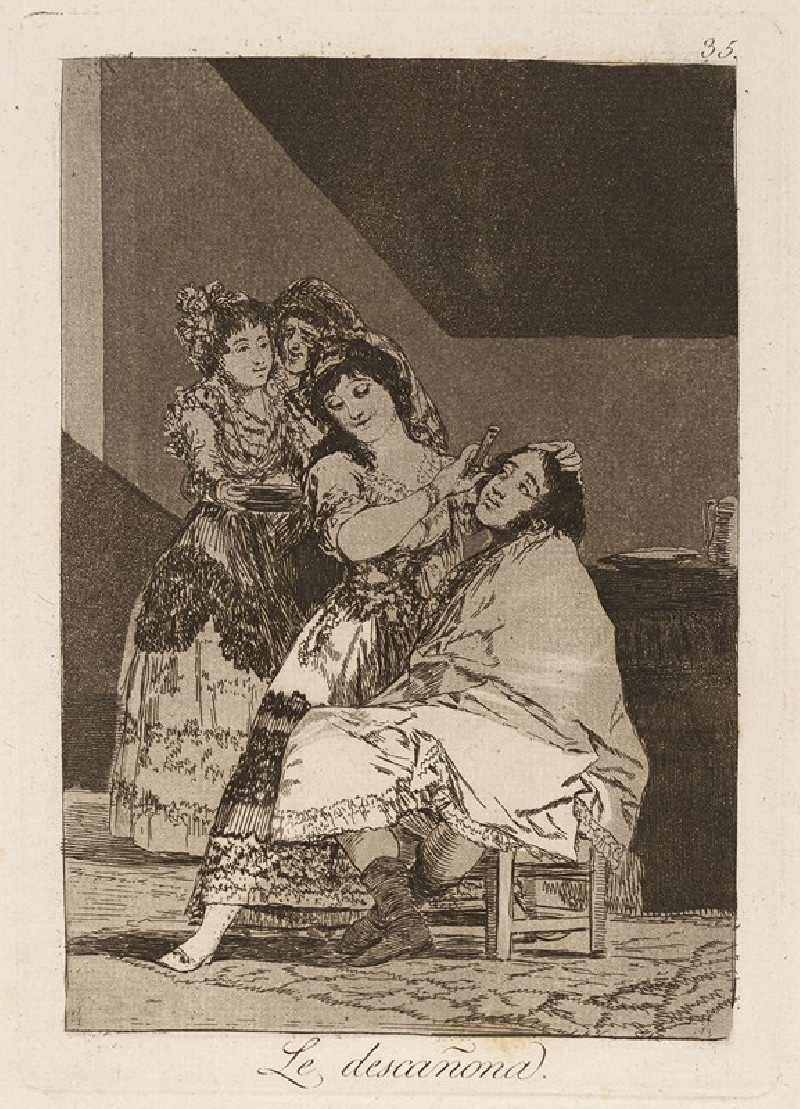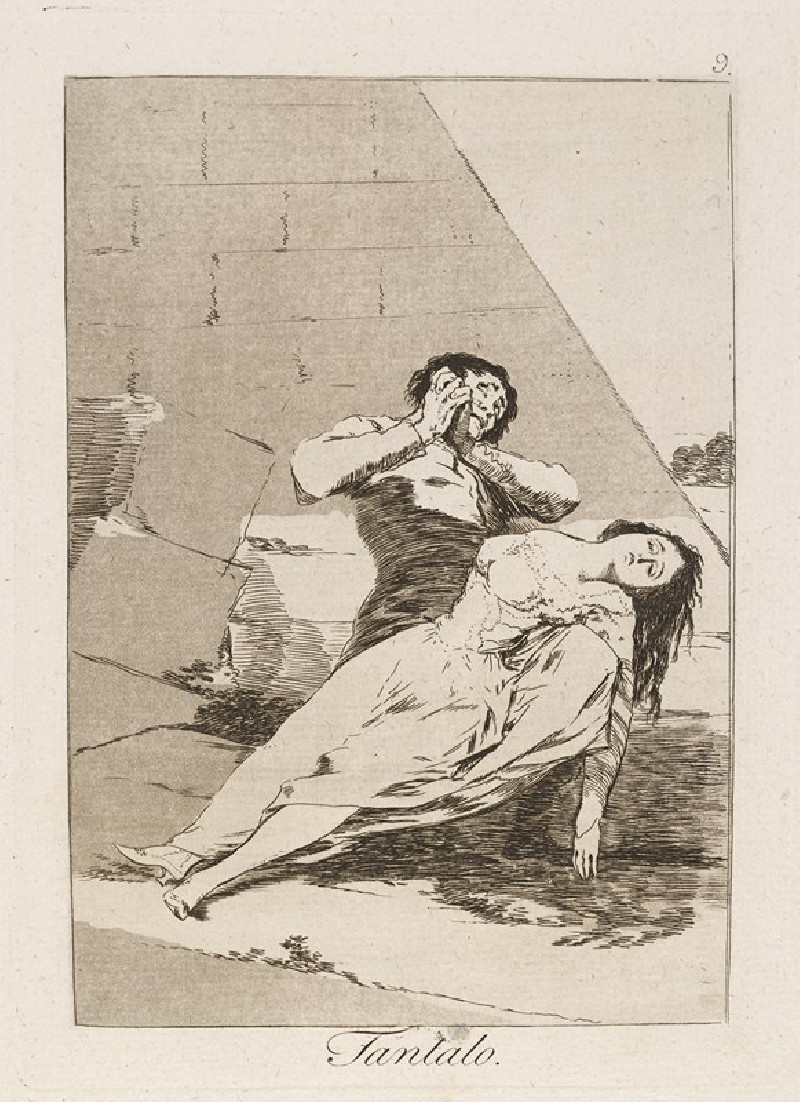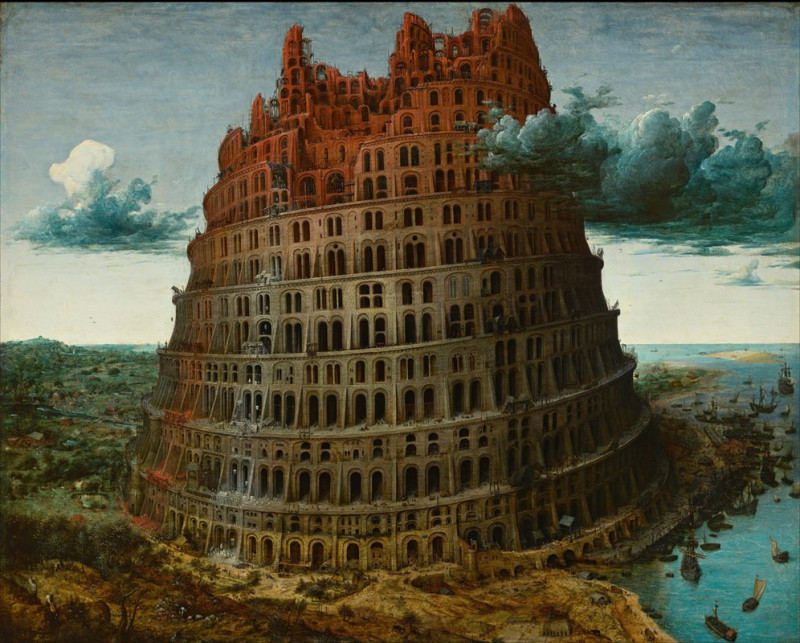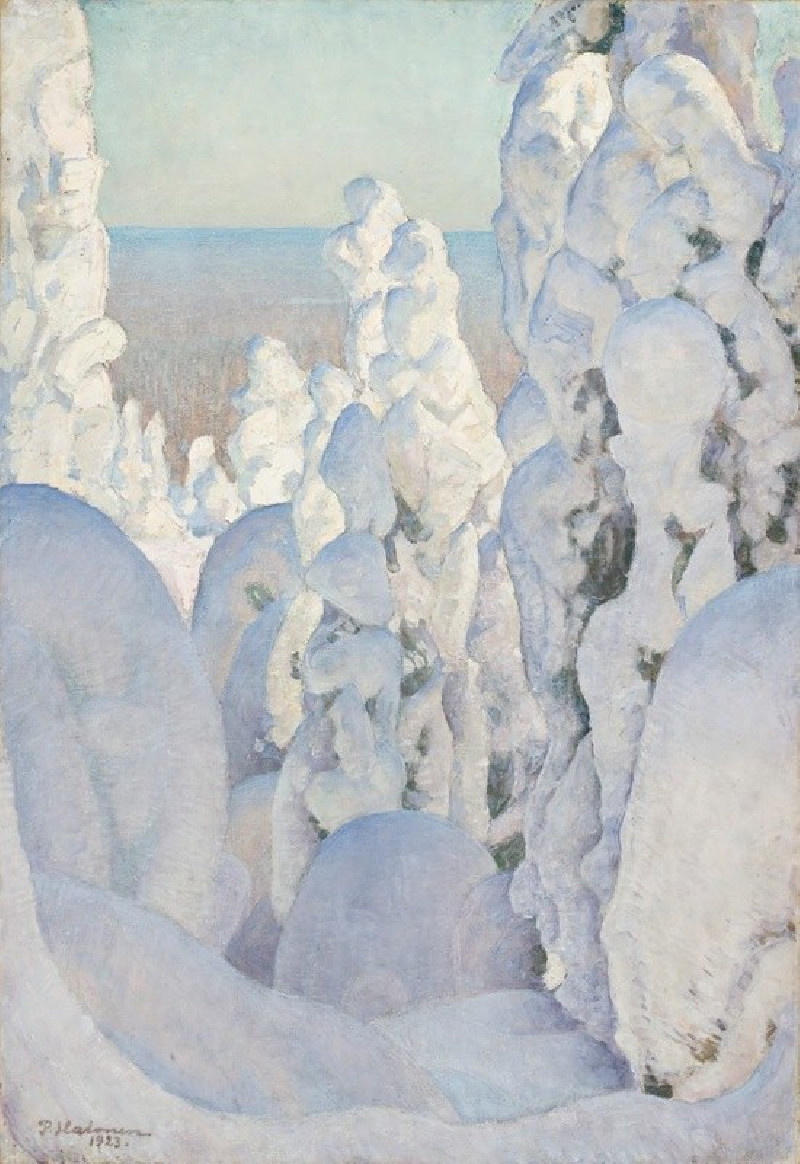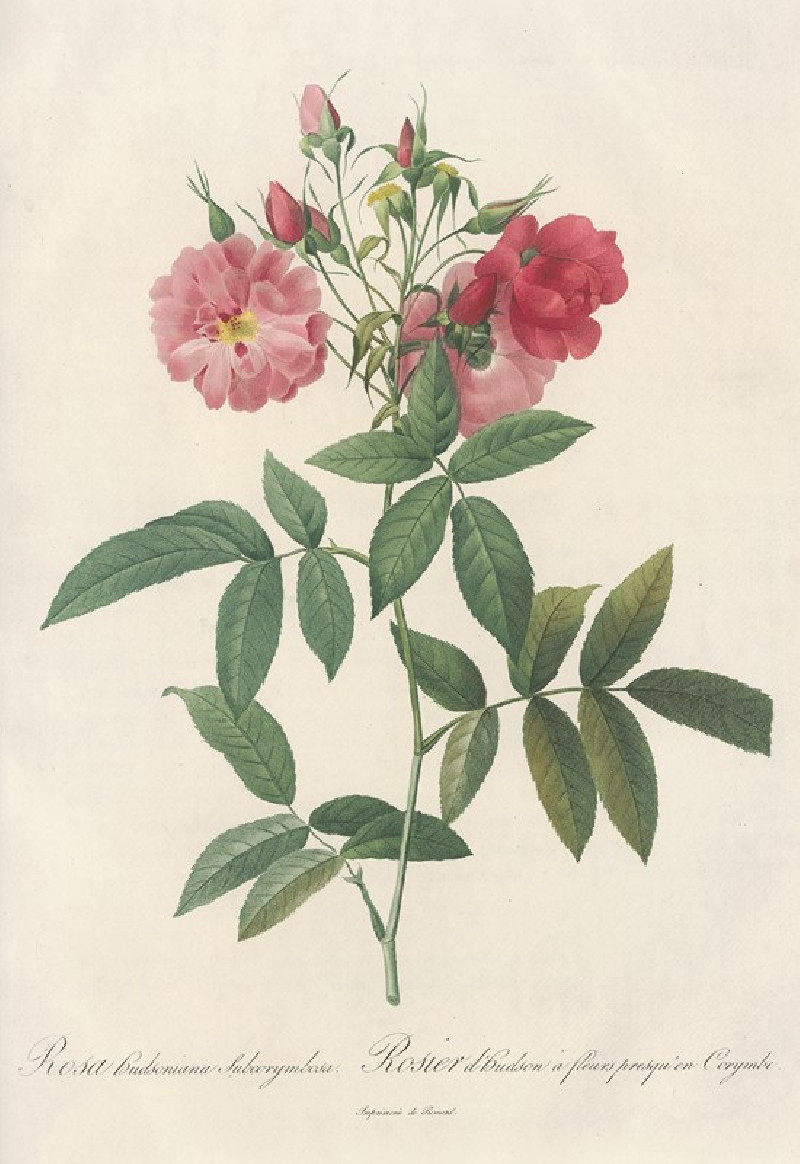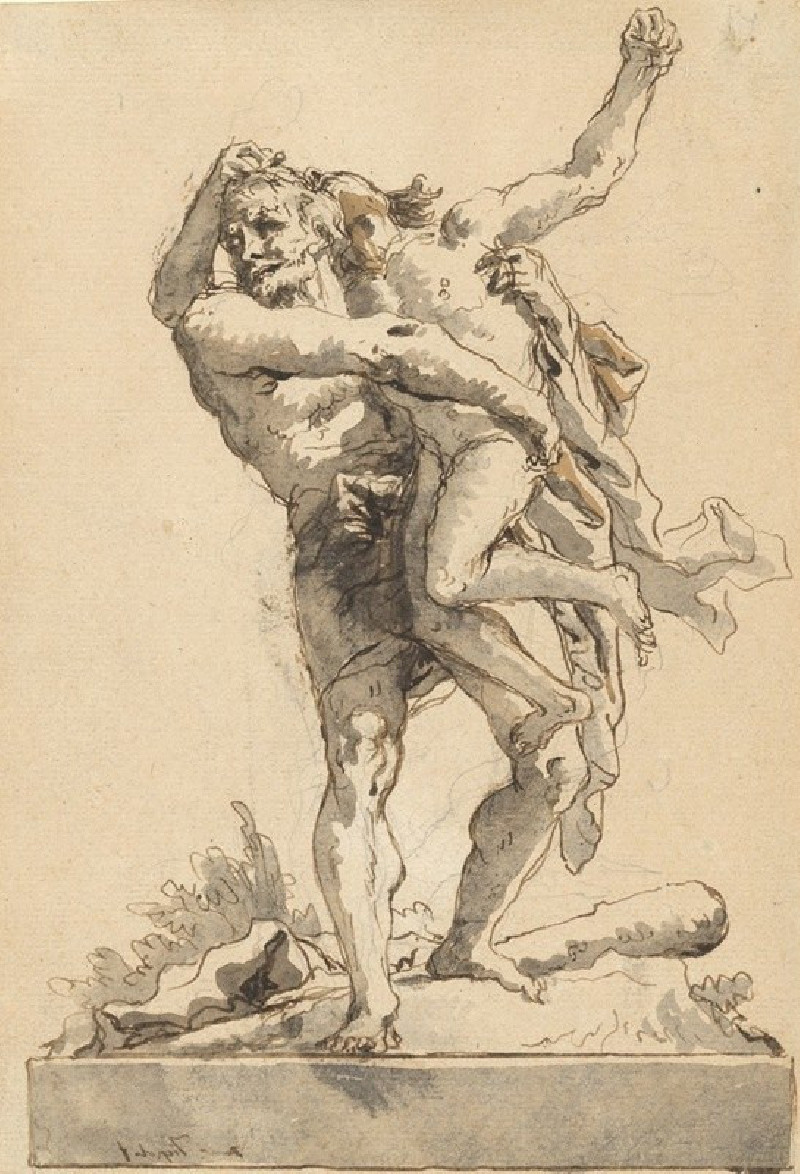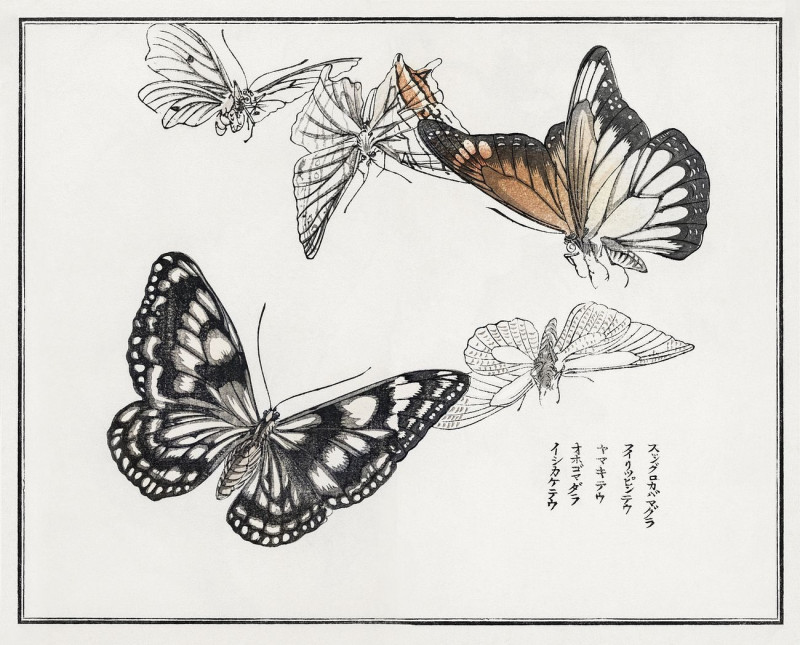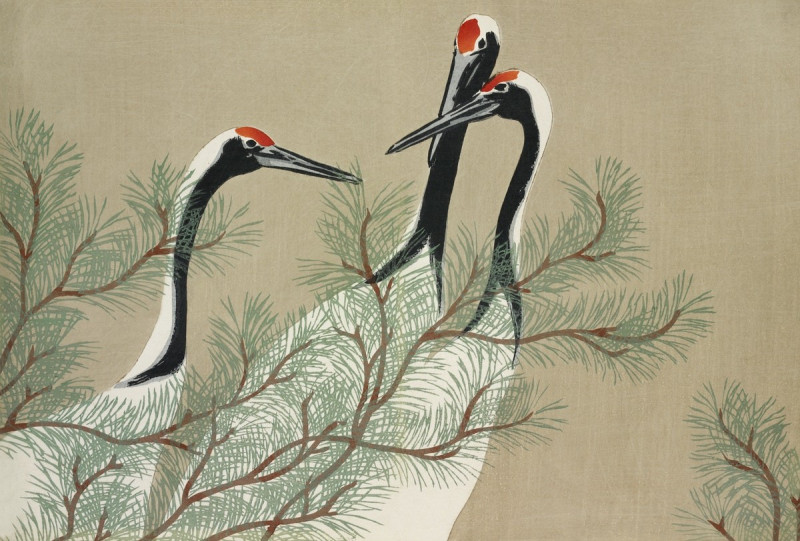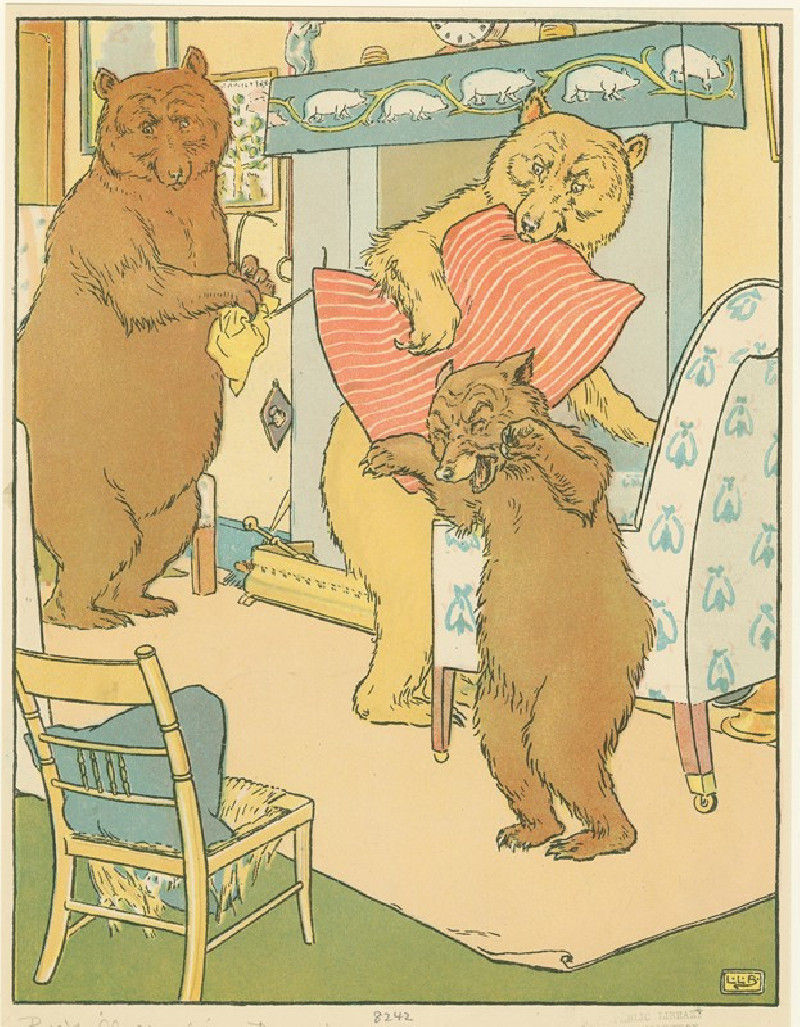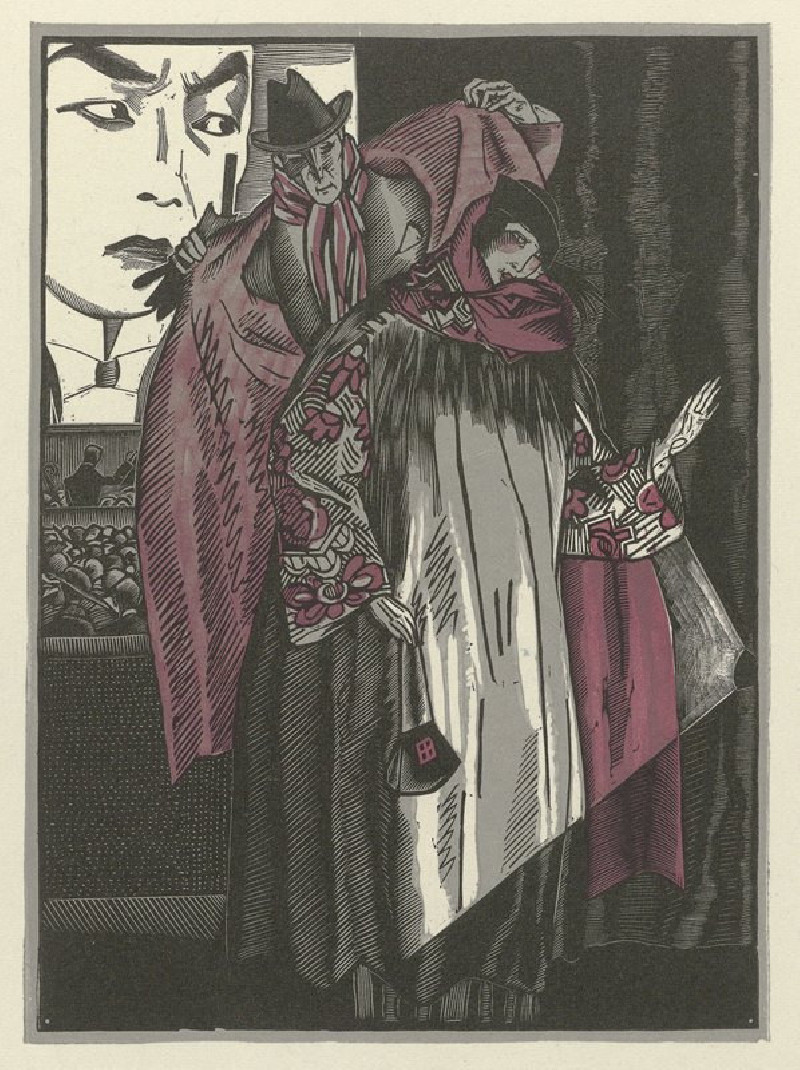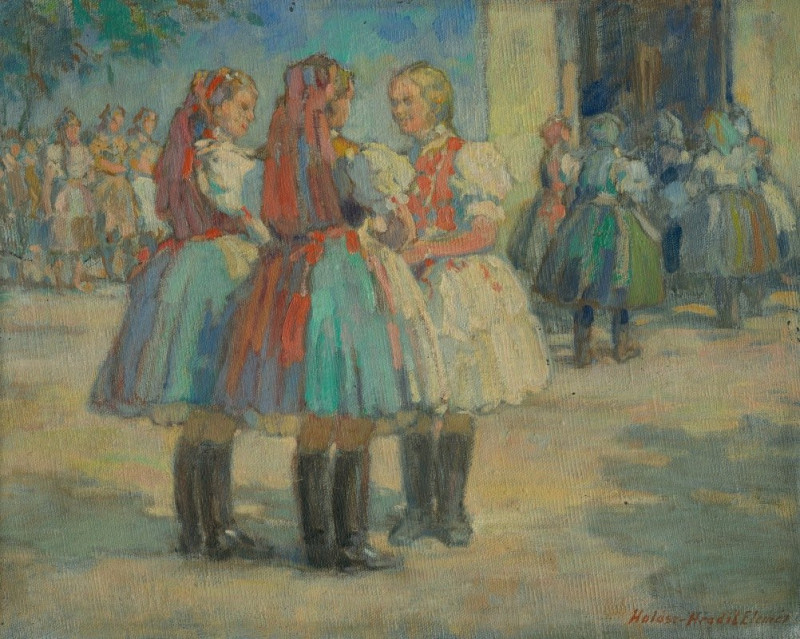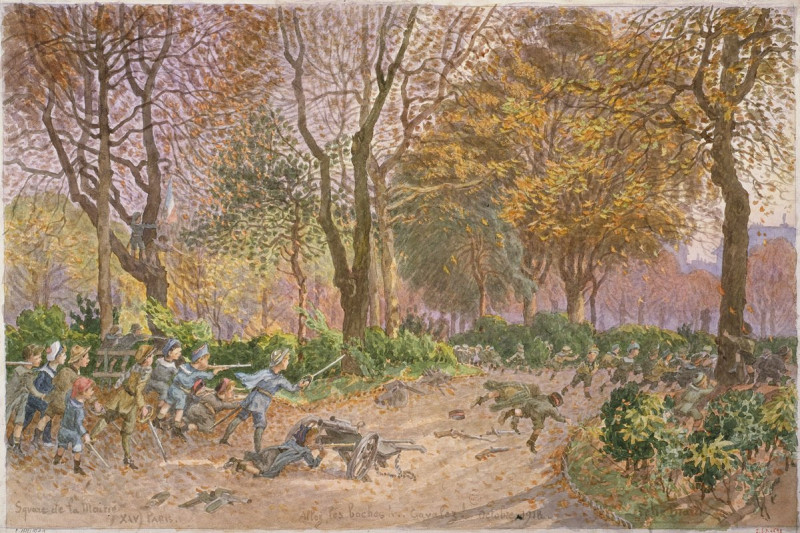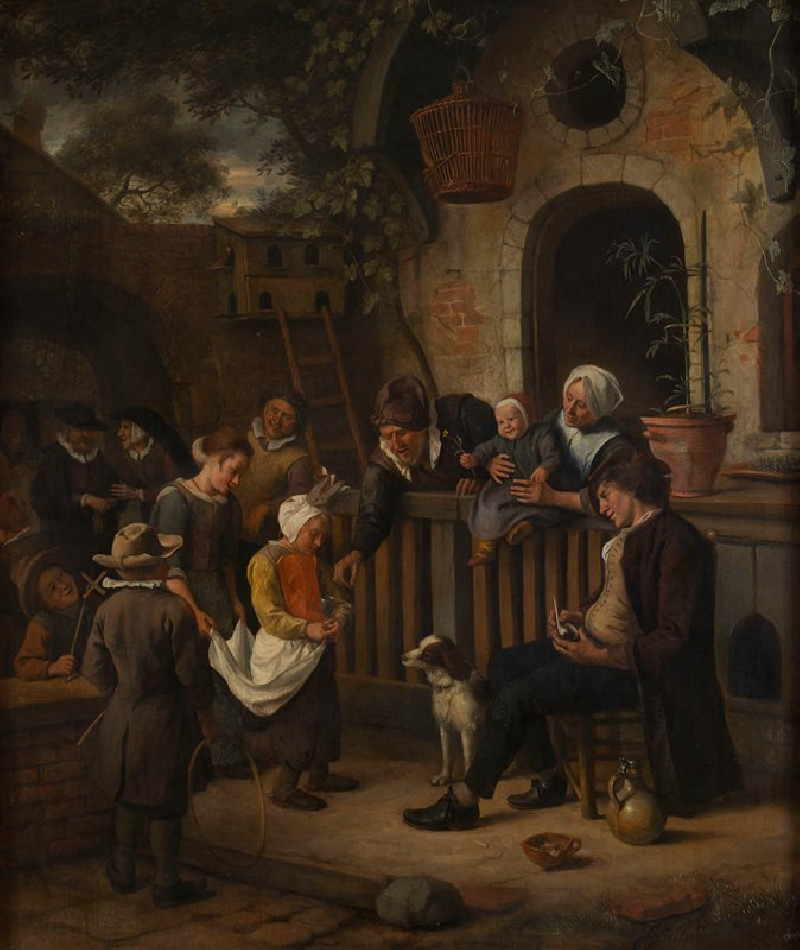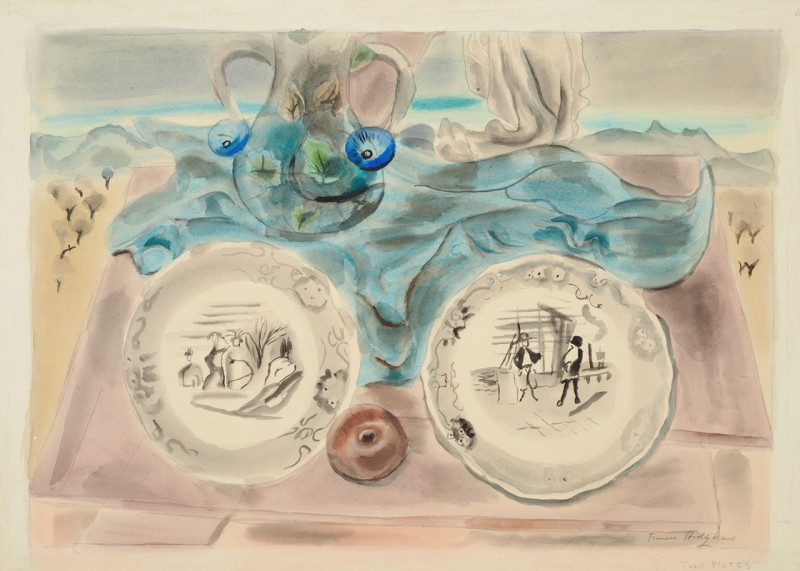Mucho hay que chupar. (There is plenty to suck.) (1796-1797)
Technique: Giclée quality print
Recommended by our customers
More about this artwork
Francisco de Goya’s etching "Mucho hay que chupar" (There is plenty to suck), created between 1796-1797, presents a deeply satirical and somewhat grim depiction of corruption and greed. This piece forms part of Goya's famous series, "Los Caprichos," a set of prints that illustrate the folly and foolishness observed in Spanish society.In this particular artwork, three grotesque figures are shown clustered around a basket from which emerge the heads of infants. These figures, possibly representing figures of authority or the clergy—common targets in Goya's critical lens—are engaged in sucking on the babies. This disturbing scene is believed to metaphorically criticize the exploitation of the innocent and vulnerable by those in power. The figures’ eagerness and ghastly expressions amplify the theme of corruption and moral decay.The setting is stark and the technique used by Goya enhances the dark and foreboding atmosphere, likely to underscore the bleak message he conveys about societal greed. The caption “Mucho hay que chupar” further emphasizes a tone of excess and voracity, echoing the insatiable nature of those who prey on others.Goya's work remains profoundly relevant, offering a cautionary view of human nature and societal structures that allows for modern reflections on similar issues prevailing in contemporary times.
Delivery
Returns
Francisco José de Goya y Lucientes (30 March 1746 – 16 April 1828) was a Spanish romantic painter and printmaker. He is considered the most important Spanish artist of the late 18th and early 19th centuries. His paintings, drawings, and engravings reflected contemporary historical upheavals and influenced important 19th- and 20th-century painters. Goya is often referred to as the last of the Old Masters and the first of the moderns.

